Meet the Thrush Bird Family: Sweet Songbirds
Updated: Mar. 28, 2023
From robins to bluebirds, these shy singers come in several sizes and colors. Know which is which when a thrush bird visits your yard.
On This Page
Thrush Bird Family Overview
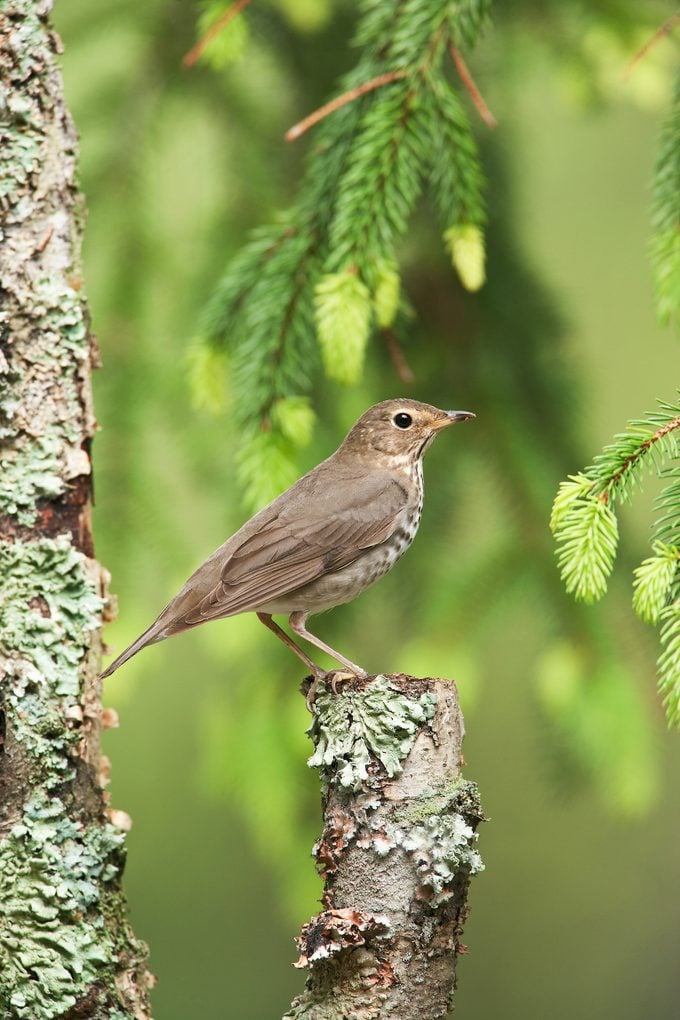
For most backyard birders, thrushes tend to fly under the radar. But you may be more familiar with this varied group than you realize. Although they may not look it, American robins and bluebirds are both part of the thrush bird family.
More than two dozen species of thrushes have been observed in North America. Many of them are rare, strong-flying strays that have wandered far from Europe, Asia or the tropics. But several common types of native thrushes are worth looking for, too.
Six species of thrushes with brown backs and spotted chests live in forests across North America. They sing from the trees but do most of their feeding on the ground, hopping and running in the shadows. What they lack in bright colors, they more than make up for with the beauty of their songs. Most brown thrush species live in the far north or in high mountains during summer.
Wood Thrush
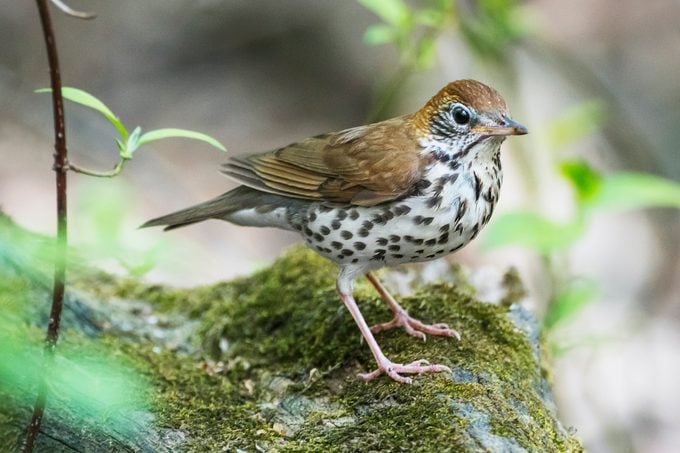
The wood thrush is found all over the eastern states, in forests or in backyards with lots of trees and thickets. It’s the largest species of this thrush group (but still smaller than an American robin) and the one with the boldest black spots on its chest. The foxy reddish brown of its head and upper back is hard to notice when it loiters in deep shade. Wood thrushes sometimes venture to the edges of lawns, making them much easier to spot. Like most of their relatives, wood thrushes migrate to the tropics for the winter.
Hermit Thrush
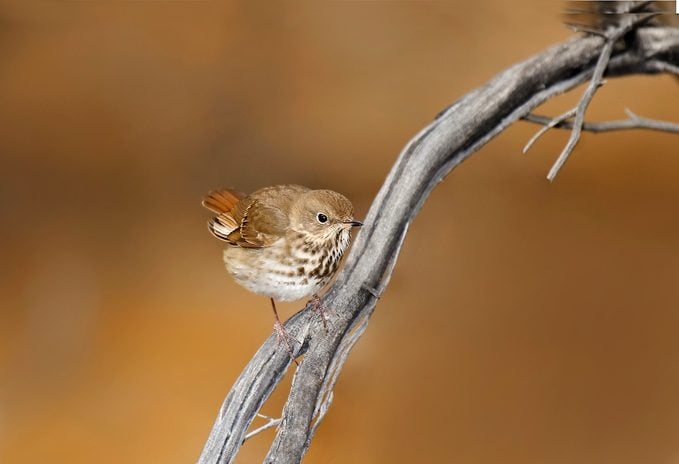
The only brown thrush bird you’re likely to see in the cold months is the hermit thrush. Some stay through the winter all across the southern states, from California to the Carolinas, and a few as far north as the Great Lakes.
This thrush also migrates later in fall and earlier in spring than its relatives. Spot its reddish brown tail, contrasting with a dull brown back. When the hermit thrush pauses in the open, it may raise and lower its tail while flicking its wings out to the side in a nervous-appearing motion.
Discover more small brown birds you might see.
Townsend’s Solitaire
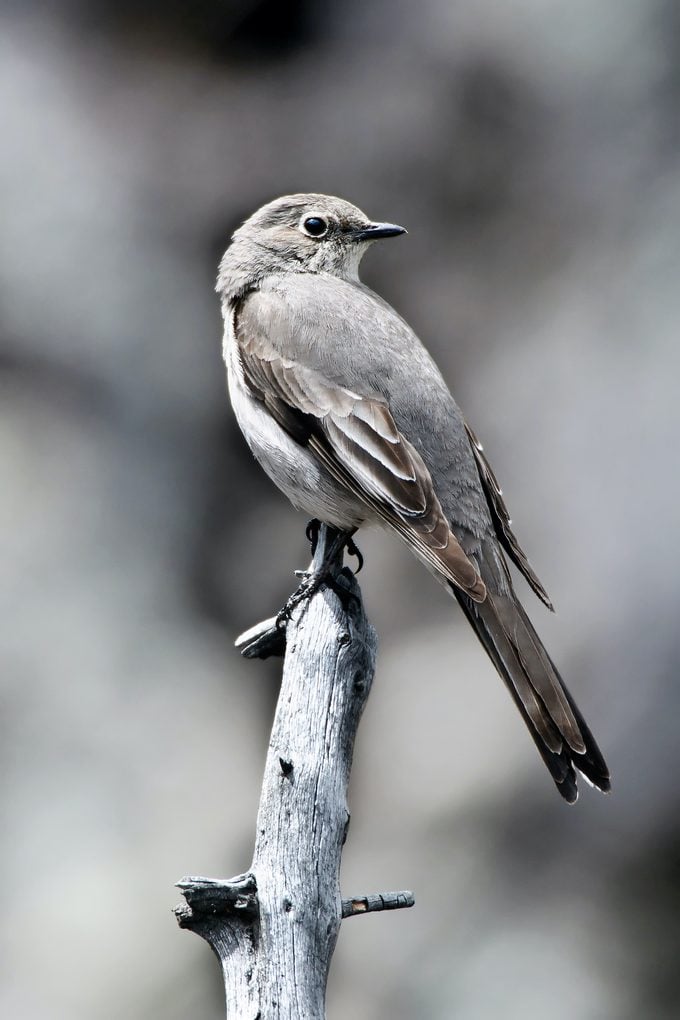
When you walk through open juniper woods in the West in winter, listen for a small bell ringing in the distance. This is the call note of Townsend’s solitaire, a slim gray thrush with a bold white eye-ring.
Solitaires are usually seen alone, as their name suggests, perching bolt upright in the open. They fly out to catch insects in midair or flutter down to pick them from foliage. In cold weather, they eat mostly berries. For the summer, most solitaires move to the higher mountains. They build their nests on the ground, well hidden under logs or in protected spots among rocks.
Varied Thrush
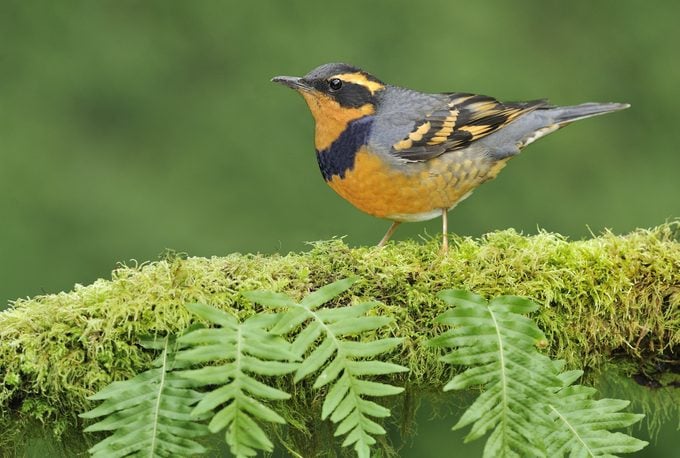
At first glance, it’s easy to mistake this thrush for a robin. A chunky, shorter-tailed bird, it’s more shy than its robin cousin. This bird hides in dense forest cover, where it can be hard to see, but it’s worth the effort to get a good look. The varied thrush has a striking pattern, with an orange eyebrow, complicated orange wing stripes and a dark band across the chest. Varied thrushes are most common in the Pacific Northwest.
In summer, they live in cool evergreen forests from southern Alaska to Idaho and northwestern California. Males perch in treetops to sing a long breathy note that sounds as if they’re whistling and humming at the same time.
For winter, most varied thrushes move south in the Pacific Coast states, though a few go off-course and fly to the east. Wandering varied thrushes have been seen in almost every eastern state and all along the Atlantic Coast, from southern Canada to Florida.
Such a surprising visitor could show up anywhere. Make sure you take a second look at every robin that visits your backyard. It just might be a varied thrush!
Swainson’s Thrush
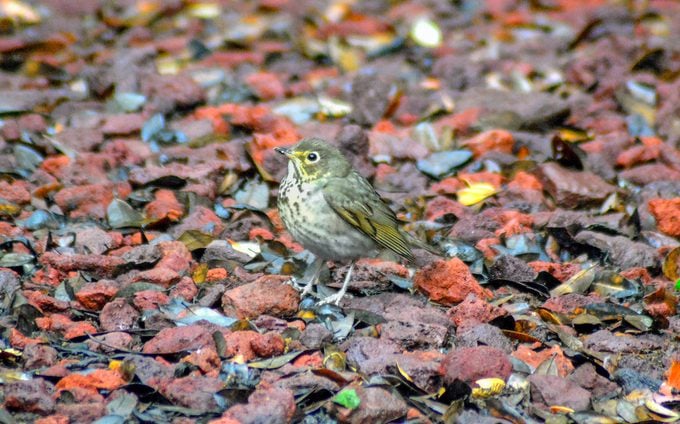
To identify a Swainson’s thrush, look for a compact shape, brown back, spotted chest, and fairly long pale legs. Look closer to spot a distinctive face pattern and bold buffy eye ring, almost as though the bird is wearing a pair of spectacles.
Swainson’s thrushes are found all across Canada and Alaska in summer, in addition to parts of the northern and western states. They spend the winter in Central and South America, as well as southern Mexico.
Do robin sightings have meaning?
Thrush Bird Songs
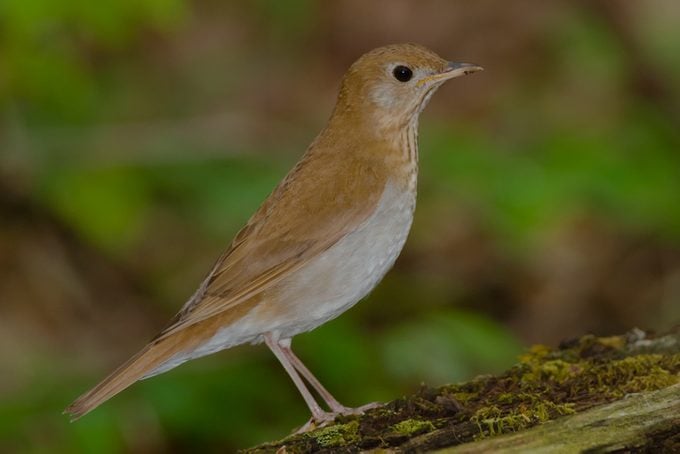
Accomplished singers, thrushes deliver some of the most beautiful bird songs in North America.
- Wood Thrush: a rich, deep fluting whistle (ee-oh-lay).
- Hermit Thrush: one long, clear note and then a short, quick warbling phrase.
- Swainson’s Thrush: a short, low note followed by whistled phrases; at the end a higher note.
- Veery: breezy whistles that spiral down (veeyurr, veeyurr, veeyurr).
- Gray-cheeked thrush: whistled phrases with a nasal tone (veeyer, vidi veer, de veer).
- Bicknell’s Thrush: like the gray-cheeked thrush but thinner; ends on a higher note.
Next, learn more about thrasher birds.




















